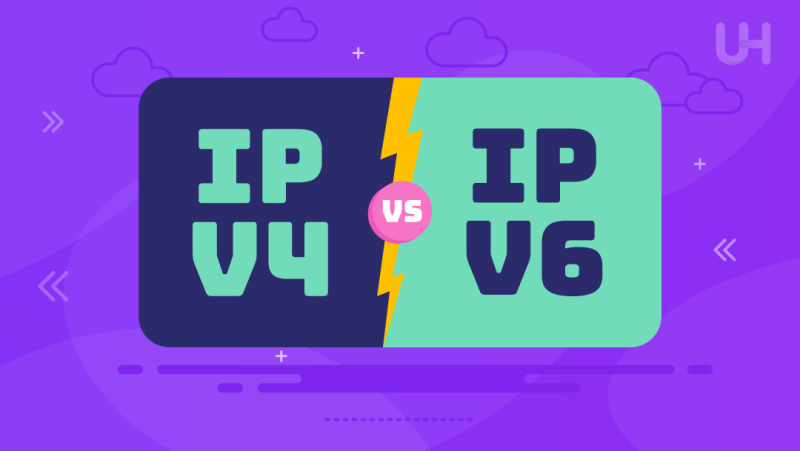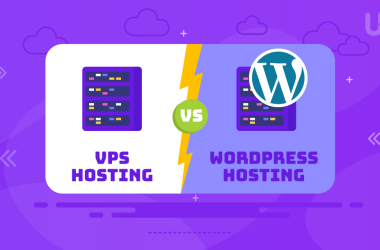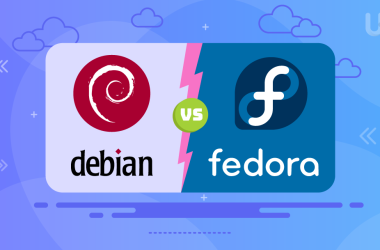Communication within the extensive Internet ecosystem is based on protocols, which use the Internet Protocol as the main platform. IP has different versions, with IPv4 vs IPv6 being the most common and unique. Understanding the differences between the two types of protocols, IPv4 vs IPv6, is essential for better networking in the rapidly changing field of Internet technology.
In this article, we will explore the differences between IPv4 vs IPv6 to better understand their importance in modern networking.
What Is the Internet Protocol (IP)?
The Internet Protocol operates as a set of rules that make it possible to “navigate” the data packets within networks, ensuring their successful transfer to the intended destination.
Specifically, when any information is transmitted by a computer, it is broken down into packets, which are smaller units of information. Such packets include IP data in order for it to be routed correctly.
Furthermore, another key aspect of the Internet Protocol is that each device or domain available on the Internet is assigned a unique IP address, which distinguishes it from all others. Tools such as “What’s My IP Address?” bring up the sender computer’s IP address and approximate physical location, which is often the case if a VPN is not in use.
Meanwhile, a regular IP address for PCs is indicative, possibly in a format such as 192.168.10.150. Since every machine can have a unique IP, this helps networks distribute packet data efficiently.
What is IPv4?

The Internet Protocol version 4, the fourth in the line of progression, is the definition that governs computer network activities operating on the idea of packet exchange. This version allows the identification of the endpoint device that is connected to the Internet using its own unique address system.
For instance, when a PC or a switch is connected to the Internet, it has its own numerical IP address. A good example is 192.149.252.76. The addressing system uses a 32-bit address scheme, which allows the use of 2^32 addresses, equivalent to 4.19 billion addresses.
This is insufficient because today, the number of those connected to the Internet worldwide has surpassed the available number of IPv4 addresses implementing the new Internet addressing system version.
Features of IPv4
Following are some of the features of IPv4:
- Operating as a connectionless protocol
- Enabling the creation of a straightforward virtual communication layer across diverse devices
- Requiring less memory and offering simplified address memorization
- Already enjoying widespread support among millions of devices
- Providing access to video libraries and facilitating conferences
Drawback of IPv4
The world currently hosts 7.6 billion people, and every individual uses more than one internet-connected device; thus, businesses equally depend on online infrastructure. Even with the availability of 4 billion addresses by IPv4, they are not sufficient enough to number all the internet-connected devices globally.
This has called for various techniques like variable-length masks and network address translations, port address translation, and inter-domain translation, designed to conserve IP address bandwidth and delay address exhaustion. VLSM techniques for saving on IP address bandwidth have developed methods for converting public IP to private IP, thus increasing internet access domain names under the same public IP network.
These techniques have significantly addressed the challenges faced by IPv4. However, it is worth noting all the above techniques have fallen short, therefore making IPv6 the best option for dedicated IP addresses.
What is IPv6?
Finally, in 1999, IPv6 was developed due to the end of the possibilities to expand the existing addresses. IPv6 is a protocol that enables different networks to interact with each other and access data transmission. It uses 128-bit IP addresses that can cover the total number of 2^128 Internet addresses. This solution resolves the problem with the existing number of network address resources and allows connecting various devices to access the Internet. 3ffe:1900:fe21:454545:0000:0000:0000 is presented with an example of an IPv6 address.
Features of IPv6
Some of the features of IPv6 include:
- Hierarchical addressing and routing infrastructure
- Support for both stateful and stateless configuration
- Provision for quality of service (QoS)
- Suitability for facilitating interaction among neighboring nodes
Benefits of IPv6
The new generation of Internet Protocol, IPv6, has some noticeable advantages, as listed below when compared to IPv4:
- Expanded Address Space: The address space of the IPv6 is great in that it is vast compared to IPv4. This is due to the need to cater to the ever-increasing IP-connected devices. IPV6 has a 128-bit IP address format, which is different from IPv4 32-bit.
- Enhanced Security: Unlike IPv4, IPv6 has excellent security in that it consists of built-in data security features such as data authentication and encryption that enhance the security and safety of transmission.
- Streamlined Header Format: The header design of IPv6 is simple and elegant, and it is easier to understand compared to IPv4. As such, it lowers the cost of the headers and enhances the speed of connection to the internet.
- Quality of Service Prioritization: IPv6 has better QoS features. It has excellent support for QoS features that guarantee the maintenance of traffic ranking. Integrating premium web hosting with IPv6 enhances web performance, as well as audio and visual quality.
- Enhanced Support for Mobile Devices: IPv6 has broad support for mobile devices, as they transmit faster and more securely than IPv4.
Enhance Your Network Infrastructure Today!
Looking to enhance your network infrastructure? UltaHost offers an IP Dedicated Server designed to accommodate the transition between IPv4 and IPv6 protocols effortlessly. Optimize network performance with our services.
Difference Between IPv4 and IPv6
IPV4 vs IPV6 packets differ in composition, particularly in headers and total header space. IPv6 introduces separate header packets, which give several routing options. From a user perspective, there are three main differences.
Address Space
IPv4 has a total of 2³²=4,294,967,296 addresses, while IPV6 has a vastly larger 2¹²⁸=340,282,366,920,938,000,000,000,000,000 addresses. That is around 340 undecillion, 300 decillions. IPv4 addresses were exhausted in 2011 due to the immense amount of internet-capable devices in the world. However, IP implementation on the internet is still alive thanks to solutions like NAT Network Address Translation, which can be implemented over IPv4.
Naming
IPv4 addresses are four decimal numbers, each from 0 to 255, separated by periods. For example, 197.0.0.1. IPv6 addresses are eight hexadecimal numbers consisting of digits (0-9) and letters (A-F), separated by colons. For example, 2600:1400:d:5a3::3bd4. Several zeros in a row can be replaced by an empty colon block.
Communication Types
Both IP systems use diverse address types to specify communication among hosts in the networks. In IPv4, unicast, broadcast, and multicast addressing can be employed, as well as multi-packet routing. While in IPV6, unicast and multicasting are actively used, and again, casting and anycast. This type of communication sends data from the sender to the closest of several data receivers using the same anycast IP system. The closest receiver is calculated dynamically during the routing protocol trip from the sender and receiver.
Conclusion
To summarize, IPv6 has several advantages over IPv4, including its larger address space, increased security, reduced header size, support for quality of service and more facilities, and support for mobile devices. These differences demonstrate the need to use IPv6 to ensure the Internet’s future and support it as new technologies and global communications systems are developed and implemented.
Upgrade your network capabilities effortlessly with UltaHost’s Fully Managed Dedicated Servers, tailored to seamlessly support both IPv4 and IPv6 protocols. Maximize your online presence and enhance performance!
FAQ
Why choose IPv6 over IPv4?
IPv6 addresses IPv4’s limitations, offering an expansive address space crucial for the growing number of internet-connected devices.
How does IPv6 enhance security?
The features of IPv6 include built-in security measures like data authentication and encryption, ensuring safer data transmission than IPv4.
What benefits does IPv6 offer mobile devices?
IPv6 provides faster, more secure connections for mobile devices thanks to its streamlined header format and prioritized quality of service.
What’s unique about IPv6’s header format?
IPv6’s simplified header boosts internet connection speeds by reducing overhead, resulting in more efficient data transmission.
How does IPv6 handle communication types differently?
IPv6 introduces anycast alongside unicast and multicast, enhancing communication flexibility and supporting diverse network applications.








